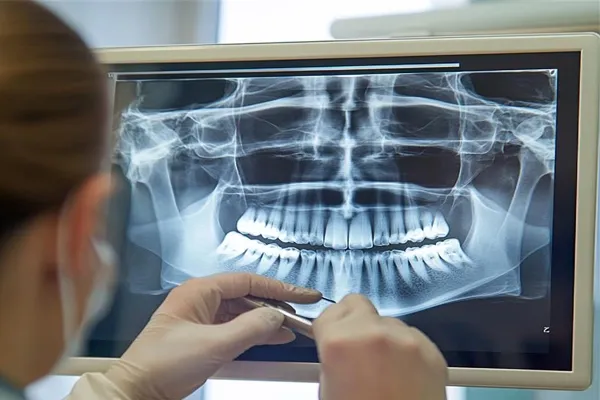The Importance of Early Orthodontic Evaluations for Kids
Orthodontic care is often associated with teenagers sporting braces, but the foundation for a healthy smile is laid much earlier in life. Early orthodontic evaluations, typically recommended by age 7, play a crucial role in identifying and addressing potential dental issues before they become more severe. These evaluations are not just about aesthetics but about ensuring proper oral health, function, and development. In this blog, we’ll explore why early orthodontic evaluations are essential, what they entail, and how they can benefit your child in the long run.
Why Early Orthodontic Evaluations Matter
The American Association of Orthodontists (AAO) recommends that children have their first orthodontic evaluation by age 7. At this age, a child’s mouth is still developing, and their permanent teeth are beginning to emerge. This stage is ideal for identifying potential issues affecting oral health, bite, or facial development. Early evaluations allow orthodontists to detect problems that may not be visible to the untrained eye and intervene at the right time to guide proper growth and alignment.
Here are some key reasons why early orthodontic evaluations are important:
1. Early Detection of Dental Issues
Not all dental problems are obvious. Some issues, such as crowding, misaligned jaws, or bite irregularities, may not be noticeable until they cause significant problems. An orthodontist can identify these issues early, even if they seem minor. For example, a slight overbite or underbite may worsen as the child grows, leading to more complex treatment later.
2. Guiding Jaw Growth and Development
Children’s jaws are still growing, which makes it easier to guide their development. Orthodontic interventions at an early age can help correct issues like narrow palates, crossbites, or protruding teeth. By addressing these problems early, orthodontists can often reduce the need for more invasive treatments, such as tooth extractions or surgery, in the future.

3. Preventing More Severe Problems
Early evaluations can prevent minor issues from becoming major problems. For instance, untreated crowding can lead to impacted teeth, while bite issues can cause uneven wear on teeth, jaw pain, or even speech difficulties. By identifying and addressing these issues early, orthodontists can help avoid more extensive and costly treatments down the line.
4. Improving Oral Health
Misaligned teeth can make it difficult to maintain proper oral hygiene. Crooked or crowded teeth are harder to clean, increasing the risk of cavities, gum disease, and other oral health problems. Early orthodontic evaluations can help ensure that your child’s teeth are properly aligned, making brushing and flossing easier.
5. Boosting Confidence and Self-Esteem
A healthy, well-aligned smile can significantly impact a child’s self-esteem. Children who are self-conscious about their teeth may be reluctant to smile or speak up, which can affect their social interactions and overall confidence. Early orthodontic evaluations can help address aesthetic concerns, giving your child a smile they can be proud of.
What Happens During an Early Orthodontic Evaluation?
An early orthodontic evaluation is a straightforward and painless process. During the appointment, the orthodontist will examine your child’s teeth, jaw, and bite to assess their development and identify potential issues. Here’s what you can expect:
Comprehensive Examination
The orthodontist will visually inspect your child’s teeth, gums, and mouth. They will look for signs of crowding, spacing, bite issues, and other irregularities. They may also check for habits like thumb-sucking or tongue-thrusting, which can affect dental development.
X-Rays and Imaging
Sometimes, the orthodontist may take X-rays or other imaging techniques to get a clearer picture of your child’s teeth and jaw structure. These images can reveal issues that aren’t visible during a visual examination, such as impacted teeth or problems with the roots of the teeth.

Assessment of Jaw Growth
The orthodontist will evaluate your child’s jaw growth and alignment. They will check for signs of overbites, underbites, crossbites, or other bite irregularities that could affect their oral health or facial development.
Discussion of Findings
After the examination, the orthodontist will discuss their findings with you. If they identify any issues, they will explain the potential impact and recommend a course of action. In some cases, they may suggest early intervention; in others, they may recommend monitoring your child’s development and scheduling follow-up evaluations.
Common Issues Identified During Early Evaluations
Early orthodontic evaluations can reveal several dental concerns that may need attention. Crowding happens when there isn’t enough space for all teeth, leading to crooked or overlapping teeth that are harder to clean and more prone to cavities and gum problems. Spacing issues occur when gaps form between teeth; while some gaps are normal, excessive spacing can indicate missing teeth or an oversized jaw. Bite problems, including overbites, underbites, crossbites, and open bites, affect how the teeth meet and can cause uneven wear, jaw pain, and difficulty chewing or speaking. Impacted teeth fail to emerge properly due to lack of space or obstruction by other teeth, potentially causing pain, infection, or damage to nearby teeth.
Benefits of Early Orthodontic Intervention
Early orthodontic intervention, often called Phase 1 treatment, offers several advantages for children. Addressing crowding and spacing issues early can reduce or eliminate the need for extractions, helping preserve natural teeth and simplify future treatments. Guiding jaw growth and tooth alignment at a young age can also shorten overall treatment time, making Phase 2 treatment during the teenage years easier and faster. Properly aligned teeth improve oral health, making brushing and flossing more effective and reducing the risk of cavities and gum disease. Additionally, early treatment can support facial symmetry by guiding jaw development, and it can boost self-esteem by giving children a healthy, confident smile they can be proud of.
When to Schedule an Early Orthodontic Evaluation
While the AAO recommends scheduling an orthodontic evaluation by age 7, certain signs may indicate the need for an earlier evaluation. If you notice any of the following issues in your child, it’s a good idea to consult an orthodontist:
- Early or late loss of baby teeth
- Difficulty chewing or biting
- Mouth breathing
- Thumb-sucking or other oral habits
- Crowded, misplaced, or blocked teeth
- Jaws that shift make sounds or protrude
Conclusion
Early orthodontic evaluations are essential for your child’s oral health. Detecting and addressing issues early can guide proper growth, prevent serious problems, and set the stage for a healthy, confident smile. If your child hasn’t been evaluated by age 7, now is the time to schedule an appointment. Prioritizing early care helps avoid extensive treatments later and supports a lifetime of healthy smiles.
Frequently Asked Questions
1. Why age 7 for the first evaluation?
Permanent teeth begin to emerge around age 7, allowing orthodontists to detect crowding, bite issues, or jaw misalignment early.
2. Will my child need braces immediately?
Not always. Many children are simply monitored until treatment is necessary to prevent bigger problems.
3. What if I wait until my child is a teenager?
Delaying may worsen crowding, crossbites, or jaw misalignment, potentially leading to extractions, surgery, or longer treatment.
4. Does early treatment eliminate the need for braces later?
Phase 1 treatment often shortens and simplifies later Phase 2 treatment, but most children still require some orthodontic care once all permanent teeth appear.
Resource:
A Parent's Guide to Children's Oral Health: Tips for Healthy Teeth
*This media/content or any other on this website does not prescribe, recommend, or prevent any treatment or procedure. Therefore, we highly recommend that you get the advice of a qualified dentist or other medical practitioners regarding your specific dental condition*
